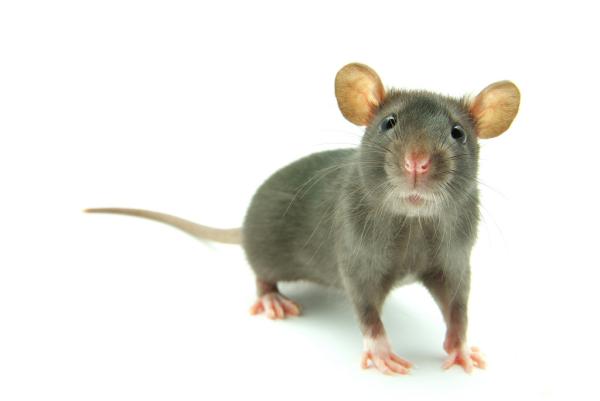
This week the European Food Safety Authority’s (EFSA) Panel on Contaminants in the Food Chain released a new paper on the chemical furan which, now wait for it, they listed as a “health concern.” As we know by now, a health concern is just a step or two away from being a health risk and then activists lobbying to get it eliminated it from our food supply so they can raise money claiming they saved us all from cancer.
First, what are furans? It's a broad category of chemicals found in nature and also used in manufacturing for almost as long as processed food has been sold (ubiquitous as far back as 1939), though some activists do intentionally interchange furans with dioxins by shortening dibenzofurans (which act like dioxins) to furans. However, that is scientifically like shortening "mistletoe" to "toe" and claiming they are the same thing.
They can now be found in trace levels in some foods - so low they were undetected, essentially zero, until technology advanced and we could find truly trace levels of chemicals, which is why our FDA says they are not a concern - but EFSA write it as if they are unsure what trace levels are; “processing and cooking conditions, and the losses which mainly occur due to evaporation in the preparation of the food at the level of the consumer, determine the final concentration in the food as consumed.”
Rats are not little people
So they did human tests for this study? Not at all. They did experiments with rats using gavage, they put a tube into the stomach of the rat and pumped in high doses of the chemical. It's a valuable technique to create a starting point but the first thing anyone in science and medicine learns is that rats are not little people.
Here is what they found:
- Rats receiving .44 mg/kg body weight daily of furan had inflammatory changes in their liver
- Rats receiving 2mg/kg body weight had no cancers at all, but some developed a form of liver cancer when the furan levels were increased to 4mg/kg of body weight.
Furan did not affect all strains of rats, only in one strain were there changes, but regardless EFSA then went to diet surveys and came up with an estimate exposure in kids of 1.8 micrograms/kg of body weight/day based on what parental recollection of food they fed their kids was - recall surveys are notoriously inaccurate. From that, EFSA now claims the groups most at risk are, of course, infants and toddlers[1] eating baby food - because everyone cares about babies - or ready-to-eat meals (because everyone in Europe claims they hate processed food) and adults drinking coffee (because a lot of adults drink coffee).
Hazard is not risk (which is why the dose makes the poison)
In the words of the study, “As there are few data available on the effect of furan in humans, the CONTAM Panel used data from experimental animals for the hazard characterization.” They set a level of 0.064 mg/kg body weight per day for those inflammatory effects and 1.31 mg/kg body weight per day for the carcinogenic effects. It's confusing, especially since the first part of the paper reported micrograms/kg body weight ingested. Let me save you the math. Infants at the highest estimated levels ingested .0018 mg/kg body weight.
An interesting, though scary-sounding to laypeople, quality of furans are that they are "volatile". Really, that just means the amounts ingested change with processing, like heating. So if you are really worried about furan levels don't give your infant coffee because the beans were roasted [2] but you shouldn't do that for every other reason imaginable too.
The report notes that processing will actually reduce the furan levels in the foods of infants and toddlers by a factor of 1.1, meaning the actual amount ingested can really be .0009mg/kg body weight, but the Panel on Contaminants in the Food Chain is undaunted by these facts and still recommend a characterization of furan being a “health concern."
No one is saying we shouldn't be cautious about ingestion of "toxins" but using studies where only one strain of rats injected with a high dose of a chemical developed cancer is not smart policy. Rat studies are meant to indicate a potential hazard in cases where the rat biology is similar to humans, not create bans. As I show in Note 2 below, preparation causes levels to vary by a great deal, and even in the worst scenario there is no real risk. As our FDA stated, "consumer exposure is well below what FDA expects would cause harmful effects. FDA has no evidence that consumers should alter their infants' and children's diets and eating habits to avoid exposure to furan."
NOTES:
[1] And yet the type of cancer the rats had is infrequent in the US among adults let alone children. There were approximately 40,000 new cases of liver cancer in the US last year. For infants and toddlers, the number was around 320. Of those 320, the most common form is hepatoblastoma which has a genetic component as well as an association with hepatitis. The form of liver cancer that developed in rats is rare in this age group.
[2] For the coffee drinkers amongst us, grinding matters too, so don't use whole beans if you are worried about trace levels of furans. And use a Mr. Coffee instead of having an espresso and never, ever drink Turkish coffee. And stir your coffee. If you stir for 5 minutes you will get a 90 percent reduction in trace levels.
If you still want a coffee after all that, you are a stronger person than I am.



